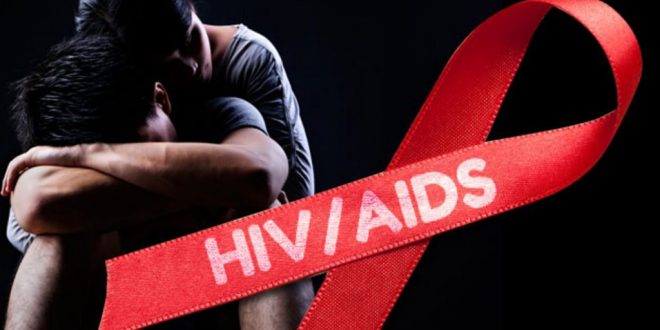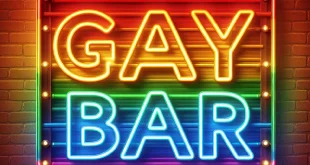Are young gay men at risk?
Unfortunately, yes. Accumulating research shows alarmingly high HIV prevalence rates among young gay men and high rates of sexual risk-taking, suggesting that young gay men in their 20’s are forging a “second wave” of the AIDS epidemic. During the 1980s, the median age at HIV infection was older than 30 years. It dropped to 25 years during the period from 1987 to 1991. From 1987 to 1991, one in every four newly infected individuals in the US was age 22 or under.
A recent study of 425 gay men aged 18-29 in San Francisco, CA found that 18% were already infected with HIV, with a seroincidence rate of 2.6% per year: among the 27-29 year olds, 29% were HIV+. Another study which sampled young gay men aged 17-22 from public venues such as bars, street corners, dance clubs and parks found 9% of the men to be HIV positive. Young African-American men were found to have especially high HIV seroprevalence (21%). A study of gay men aged 18-24 in New York City found 9% HIV positive.
What places young gay men at risk?
In contrast to studies with older gay men which demonstrate dramatic reductions in HIV risk-taking behaviors, a variety of studies show that young gay men are engaging in high rates of unsafe sex. In a survey of gay men aged 18-25 in three medium-sized West Coast communities, 43% of the sample reported having engaged in unprotected anal intercourse during the previous 6 months.(7) A study of gay and bisexual adolescent males in Minnesota found that 63% were at “extreme risk” due to unprotected anal intercourse or intravenous drug use. A San Francisco telephone survey showed that 44% of gay men under the age of 30 had engaged in unprotected anal intercourse during the previous year, compared to 18% of the men over age 30.
What contributes to risk taking?
A complex array of factors – at individual, interpersonal and community levels – contributes to the high sexual risk-taking of young gay men. Since the bulk of AIDS cases among gay men is among men aged 30-40, many young gay men perceive AIDS as a disease of older men and feel it is safe to have unprotected sex with other young men. Most young men know how HIV is transmitted and men who engage in unprotected sex do label their behavior as putting themselves at risk for AIDS. Nonetheless, with their feelings of invulnerability typical of youth, young men may feel the negative consequences “won’t happen to me”.
Young men are often in an exploratory phase with regard to sexuality which may entail high numbers of partners and a willingness to try a variety of activities. Due to inexperience, young men may be less competent in negotiating low-risk sex and less knowledgeable about making safe sex activities enjoyable. Coming out as gay can also be a period of great emotional turbulence, resulting in low self-esteem and depression which may reduce their feelings of self-efficacy and motivation for safe sex.
Further, protecting one’s health is not necessarily a young gay man’s top concern. Interpersonal motivations may be more pressing – wanting to fit in, to find companionship and intimacy. However, interpersonal issues can also contribute to unsafe sex. For young gay men, unsafe sex is most likely to occur with a boyfriend – someone whose affection is very important to them.(7)
The social structure and norms of the young gay subculture may not be entirely conducive to safer sex. In many communities, gay bars and public cruising settings provide the main opportunities for young gay men to meet and socialize. Yet each is highly sex-charged and the bar scene’s emphasis on alcohol sets the stage for engaging in sex while high – consistently found to contribute to unsafe sex.
What works for young gay men?
Despite enormous need, only a handful of programs specifically targeting young gay men have been designed and evaluated. Individualized risk-reduction counseling followed by peer education and referrals to drug, counseling and health services were reported to be an effective strategy for decreasing unprotected anal intercourse among gay male adolescents in Minneapolis, MN. In New York City, an intensive, multi-session small group intervention was offered to gay youth aged 14-19 seeking services at a community-based agency for gay youth; the more sessions youth attended, the more dramatic the changes in risk behavior.
Community-level programs can reach large numbers of young men. One successful program promoted a norm for safer sex among young gay men through a variety of social, outreach and small group activities designed and run by young men themselves. Rates of unprotected anal intercourse dropped from 40% to 31% after the intervention. The program found that young men engaging in unsafe sex who were unlikely to attend workshops were more likely to be reached through outreach activities – such as dances, movie nights, picnics, gay rap groups, and volleyball games.(13) STOP AIDS’s Q Action, in San Francisco, CA, is a community organizing model that promotes HIVprvention by putting the power for designing and implementing interventions directly into the hands of young gay men.
Youth-oriented media can also be used creatively to reach large numbers of young gay men. In Australia, ads promoting HIV prevention peer support groups appeared in popular youth magazines across the country. Over 1,300 young men responded. Follow-up questionnaires showed that 73% had not told a family member about being gay, and 48% had told no one. Direct mail was also found to be highly successful for sending AIDS and sexuality information to gay adolescents in rural, isolated, or culturally difficult environments who would otherwise not access support.(14)
What needs to be done?
Since there are multiple factors that contribute to HIV risk-taking among young gay men, multi-level prevention programs are necessary – programs that impact variables at individual, interpersonal and social system levels. Funding, designing, implementing and evaluating HIV prevention programs for young gay men must be a high priority to halt the AIDS epidemic.
The myth that the gay community has been saturated with AIDS prevention services is in serious need of debunking. New young men will come out each year who have not been exposed to prevention campaigns of previous years, thus HIV prevention for young gay men must be ongoing and dynamic.
Engaging, creative programs are needed that address HIV prevention within the contexts of young gay men’s lives, incorporating issues of self-esteem, coming out, substance use and interpersonal and social needs. Community-level and peer outreach programs are especially promising, and services for young gay men of color are particularly needed. Since previous sexual history is a strong predictor of current risk-taking behavior, intervention at an early point in a young man’s sexual initiation will be maximally effective.
Societal homophobia may impede implementing effective prevention programs for gay youth and may discourage young gay men from accessing prevention services.Political concerns must not interfere with HIV prevention services for young gay men. A comprehensive HIV prevention strategy uses multiple elements to protect as many of those at risk of HIV infection as possible. Targeting young gay men with AIDS prevention messages and services is not “condoning” or “promoting” homosexuality, it is acting responsibly in the face of a grave public health threat. Unless action is taken quickly, we will lose a new generation of gay men.
caps.ucsf.edu/YGMtext.html – 2000
 Lesbian, Gay, Bisexual, Transgender & Intersex News Lesbian News, Gay News, Bisexual News, Transgender News, Intersex News, LGBTI News
Lesbian, Gay, Bisexual, Transgender & Intersex News Lesbian News, Gay News, Bisexual News, Transgender News, Intersex News, LGBTI News




